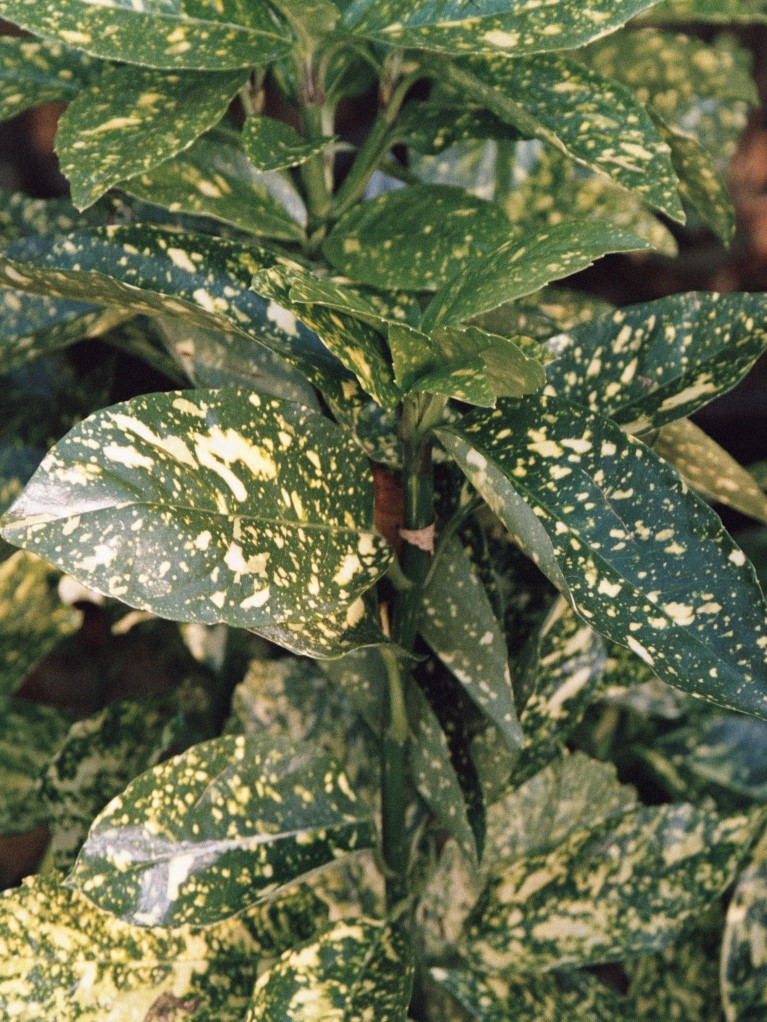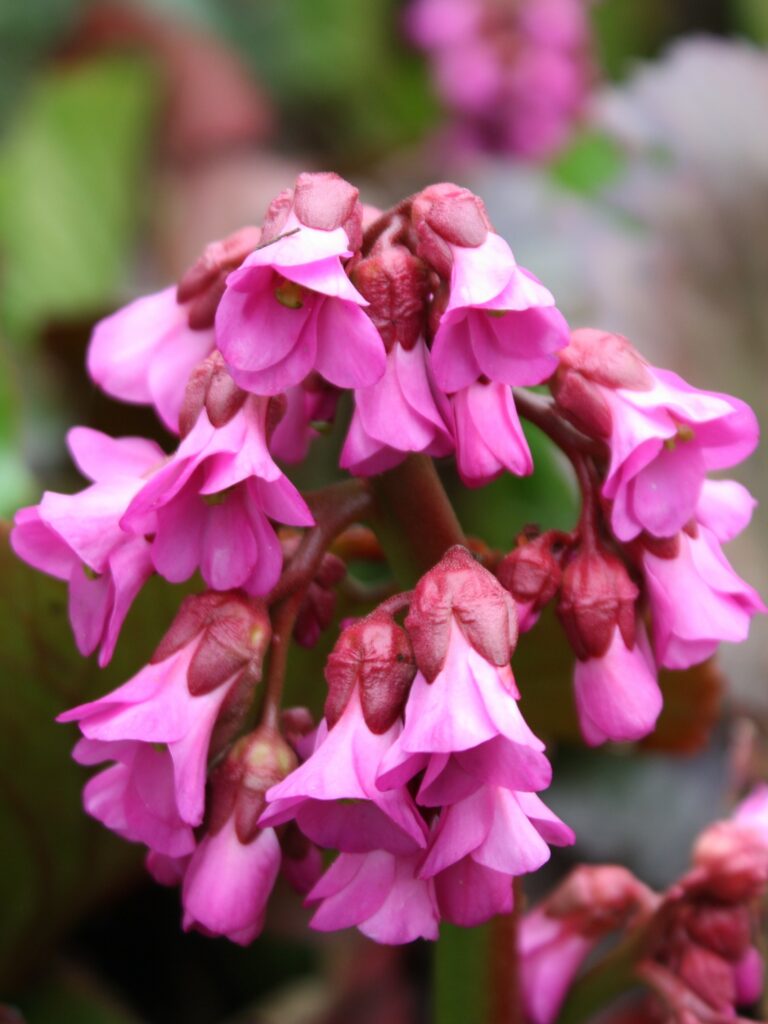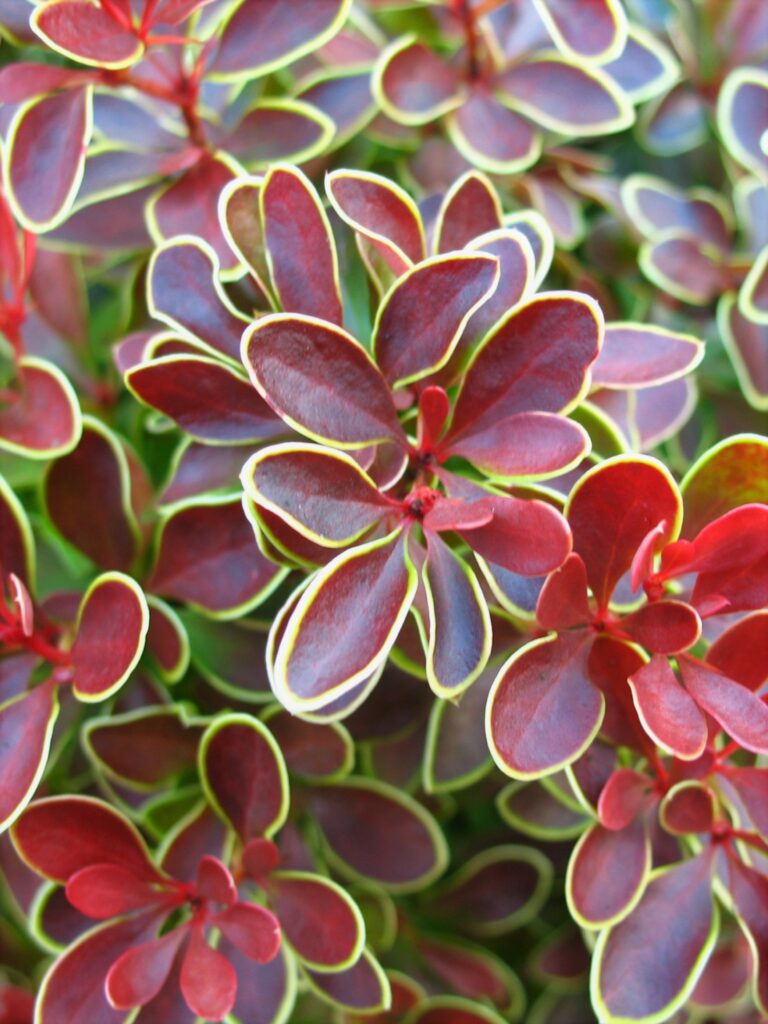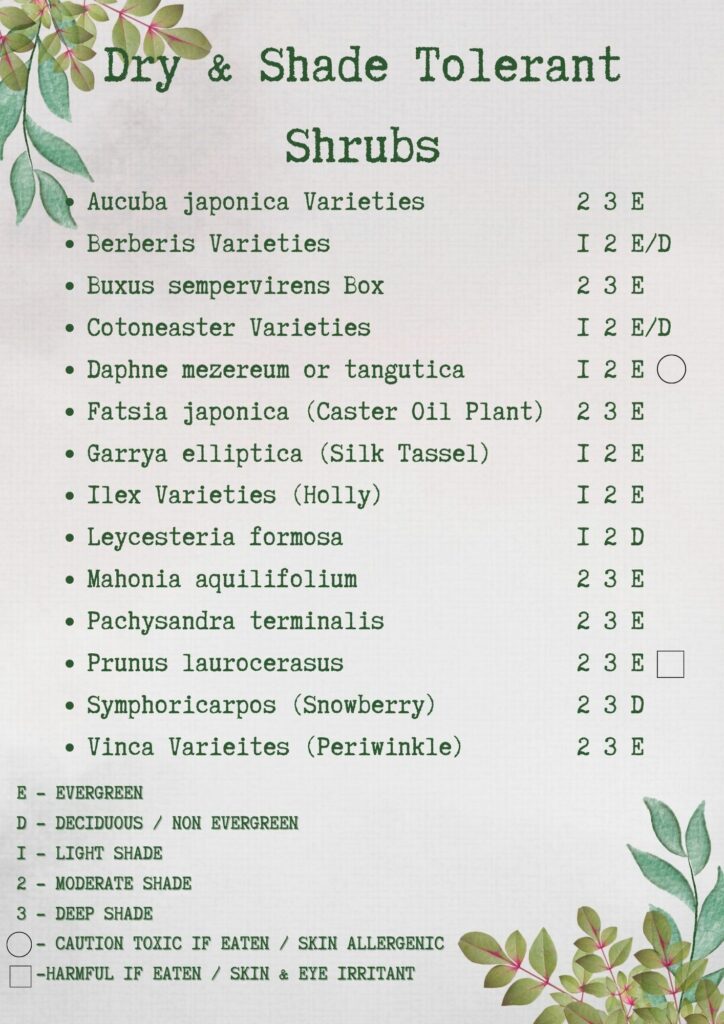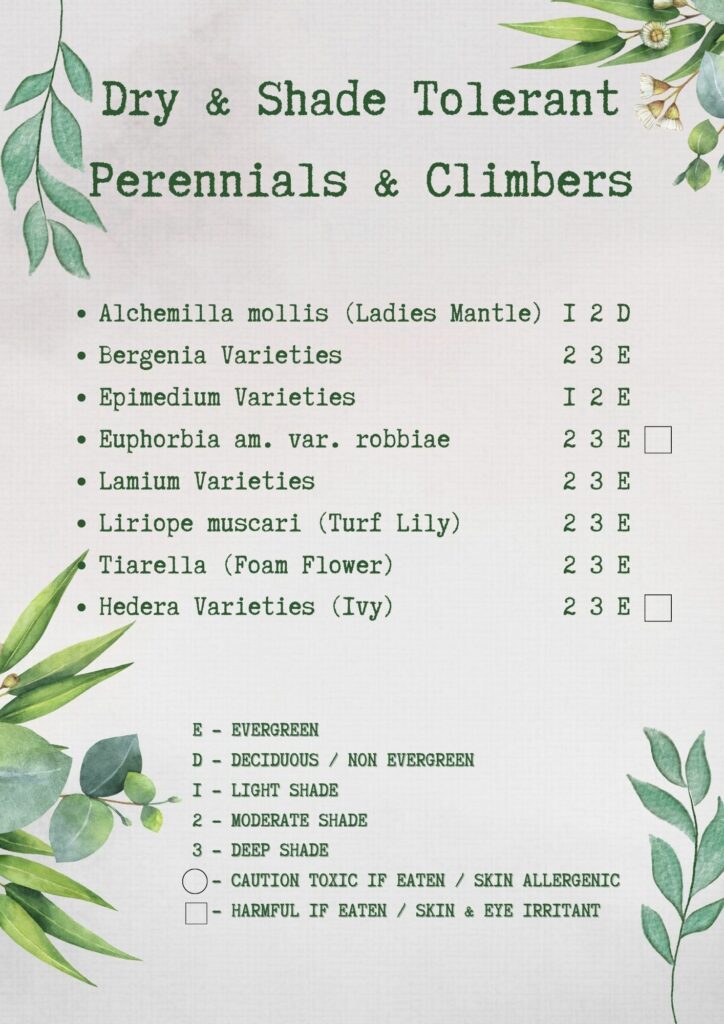Growing plants in dry, shady areas can be challenging, as these conditions often limit the availability of sunlight and water. However, with careful plant selection and proper care, you can create a beautiful and thriving garden even in the shadiest spots.
Shade Intensity
The intensity of shade varies considerably, experimentation is often required as plants sometimes grow in areas you would not expect them to.
- (1) Light Shade – Shade for half a morning
- (2) Moderate Shade – Shade for half a day
- (3) Deep Shade – Shade for most of the day
Container Gardening
Consider using pots or raised beds in dry, shady spots. Containers offer better control over soil quality and moisture levels, making it easier to create an ideal environment for your chosen plants.
Planting
Before selecting your plants, understand the specific conditions of your dry, shady spot. Determine the amount of shade it receives throughout the day and the moisture levels in the soil.
- Soil– These spots often have poor soil quality. Dig in lots of compost or well-rotted manure to the soil to improve drainage and water retention
- Mulching– Use organic mulch like wood chips, bark or leaves, around the base of the plants
- Watering– When watering, do so deeply and infrequently. This will allow the soil to dry out between watering’s- encouraging your plants to develop deep root systems and become more drought-tolerant
Top Tips:
Regularly inspect your plants for signs of stress, pests or diseases.
Remove any dead or yellowing foliage and prune as necessary to maintain plant health and shape.
Be patient- it may take some time for plants to become established in dry, shady areas. Give them time to adapt and grow.
